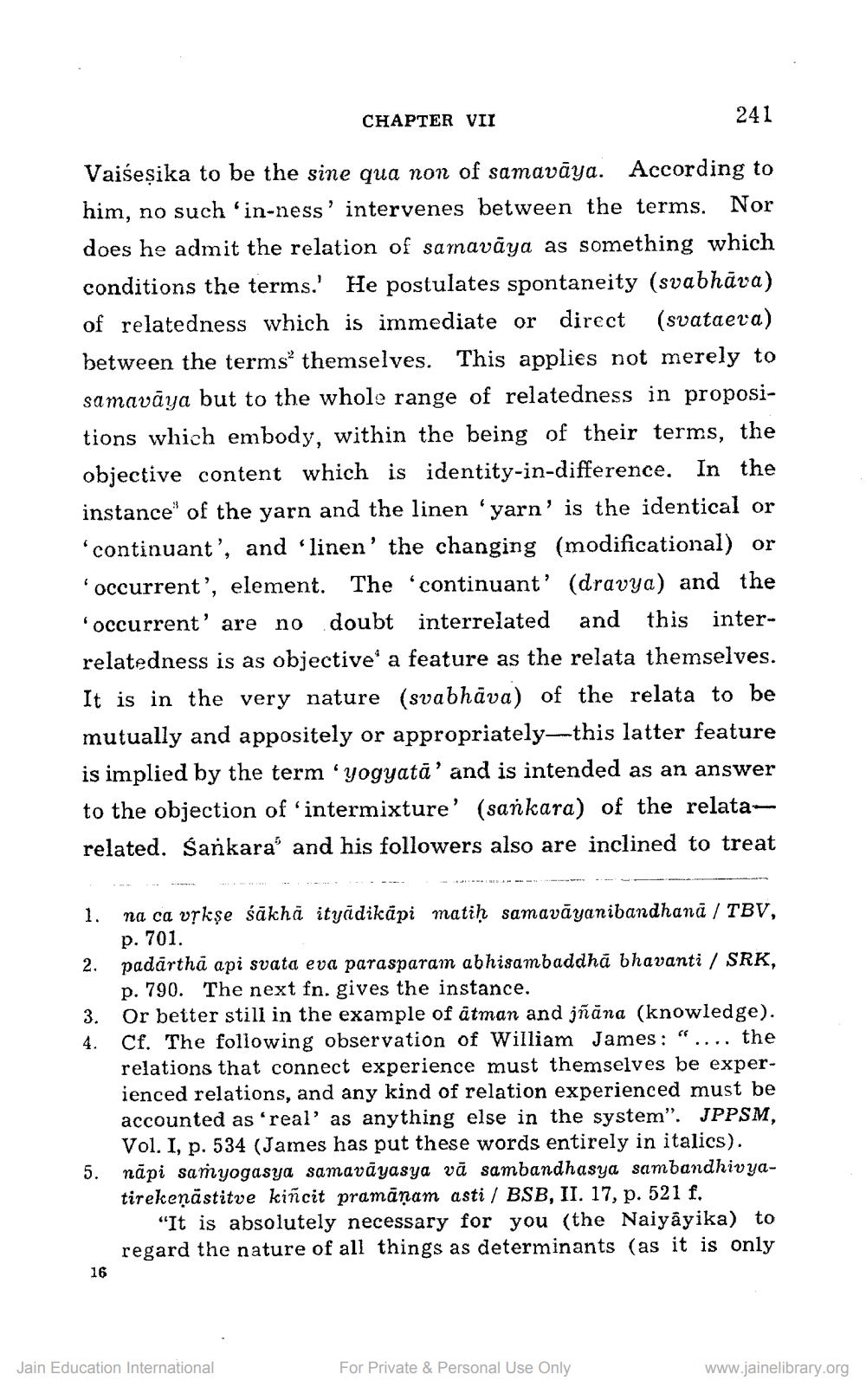________________
CHAPTER VII
241
Vaišeșika to be the sine qua non of samavāya. According to him, no such 'in-ness' intervenes between the terms. Nor does he admit the relation of samavāya as something which conditions the terms.' He postulates spontaneity (svabhāva) of relatedness which is immediate or direct (svataeva) between the terms themselves. This applies not merely to samavāya but to the whole range of relatedness in propositions which embody, within the being of their terms, the objective content which is identity-in-difference. In the instance of the yarn and the linen "yarn' is the identical or 'continuant', and 'linen' the changing (modificational) or
occurrent’, element. The 'continuant' (dravya) and the 'occurrent' are no doubt interrelated and this interrelatedness is as objective' a feature as the relata themselves. It is in the very nature (svabhāva) of the relata to be mutually and appositely or appropriately—this latter feature is implied by the term 'yogyatā' and is intended as an answer to the objection of intermixture' (sankara) of the relata related. Sankara’ and his followers also are inclined to treat
1. na ca vřkşe śākhä ityādikāpi matiḥ samavāyanibandhanā / TBV,
p. 701.
2. padārtha api svata eva parasparam abhisambaddha bhavanti / SRK,
p. 790. The next fn. gives the instance.
Or better still in the example of atman and jñāna (knowledge). 4. Cf. The following observation of William James: ".... the
relations that connect experience must themselves be experienced relations, and any kind of relation experienced must be accounted as 'real' as anything else in the system". JPPSM,
Vol. I, p. 534 (James has put these words entirely in italics). 5. napi samyogasya samavāyasya va sambandhasya sambandhivyatirekeņāstitve kiñcit pramāņam asti / BSB, II. 17, p. 521 f.
"It is absolutely necessary for you (the Naiyāyika) to regard the nature of all things as determinants (as it is only 16
Jain Education International
For Private & Personal Use Only
www.jainelibrary.org




